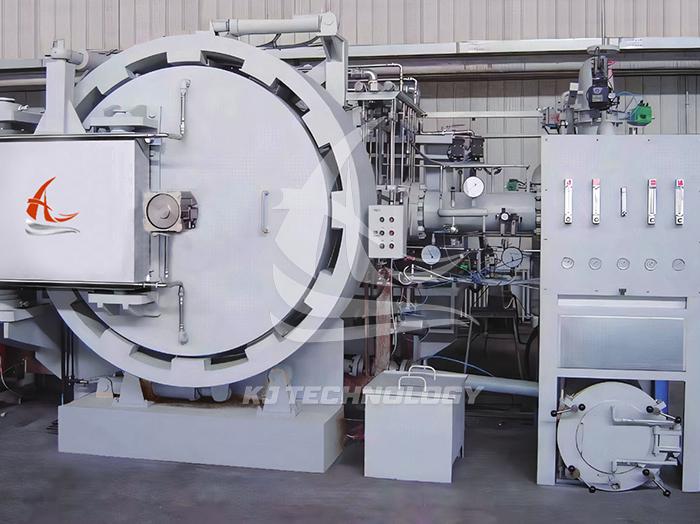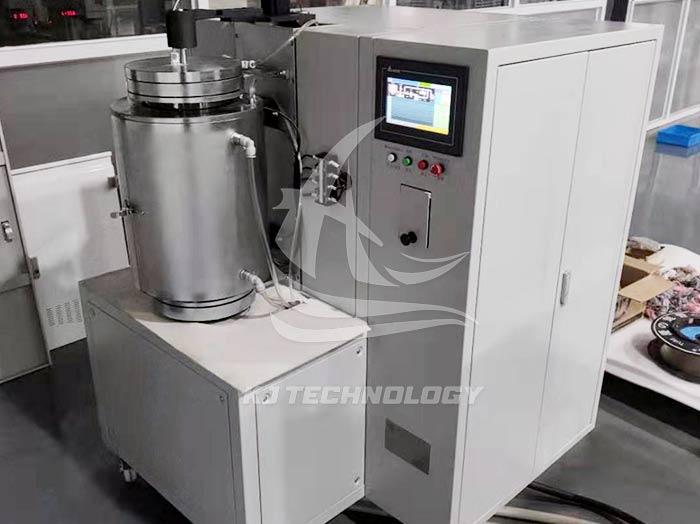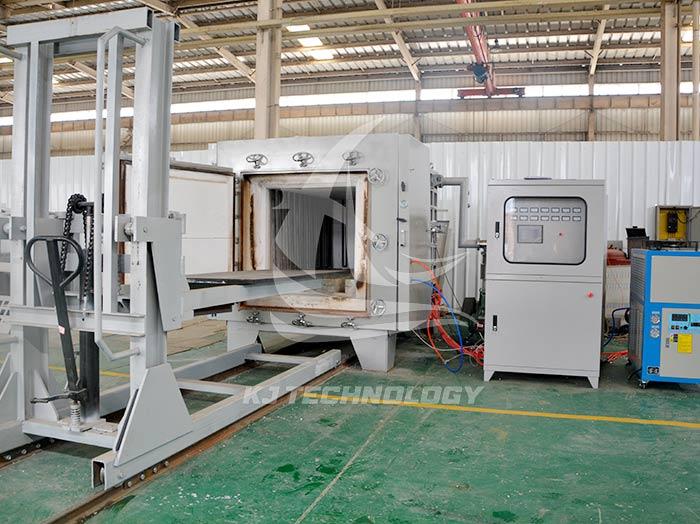What materials can be brazed in a diffusion welding vacuum furnace?
 08-18-2025 Author: KJ technology
08-18-2025 Author: KJ technology
The diffusion welding vacuum furnace (vacuum diffusion welding furnace) is capable of brazing various materials due to its unique process environment (vacuum or protective atmosphere, high temperature pressure), especially suitable for material combinations that are difficult to handle with traditional welding methods. The following are the main types of materials that can be brazed and their typical applications:
1. Metal materials
aluminum alloy
Features: Low density, high specific strength, widely used in aviation and aerospace fields.
Solder: Eutectic aluminum silicon solder (such as Al Si alloy), with good wetting, flowability, and corrosion resistance.
Application: Manufacturing complex aluminum structural components, such as aircraft engine blades, spacecraft supports, etc.
Stainless steel and high-temperature alloys
Features: High temperature resistance, corrosion resistance, commonly used in fields such as power and chemical engineering.
Solder: Nickel based solder (such as BNi-2), silver based solder (such as BAg-8).
Application: Welding stainless steel pipes, high-temperature alloy turbine discs, etc.
Titanium and titanium alloys
Features: High strength, low density, corrosion resistance, suitable for aviation and medical fields.
Solder: Titanium based solder (such as Ti Zr Ni), silver based solder (with the addition of active elements).
Application: Titanium alloy aviation components, artificial joints, etc.
Copper and copper alloys
Characteristics: Excellent conductivity and thermal conductivity, commonly used in the electronics and power industries.
Solder: Copper based solder (such as BCu-80Ag), silver based solder (such as BAg-72Cu).
Application: Welding copper conductors, heat exchangers, etc.
Refractory metals (tungsten, molybdenum, tantalum, etc.)
Characteristics: High melting point, high hardness, traditional welding is prone to cracking.
Solder: Nickel based, cobalt based solder (with added active elements).
Application: Welding tungsten electrodes, molybdenum crucibles, etc.
2. Non metallic materials
ceramic materials
Characteristics: High hardness, high temperature resistance, but high brittleness.
Solder: Active metal solder (such as Ag Cu Ti), titanium element can promote ceramic wetting.
Applications: Ceramic metal seals, electronic device packaging, etc.
graphite material
Characteristics: High temperature resistance, good conductivity, commonly used for high-temperature furnace lining.
Solder: Nickel based, titanium based solder.
Application: Graphite electrode connection, high temperature furnace structural components.
composite material
Characteristics: Composed of two or more materials with complementary properties.
Solder: Select matching solder based on the substrate material (such as silver based solder for metal matrix composites).
Application: Connection of carbon fiber reinforced metal matrix composites and ceramic matrix composites.
3. Combination of heterogeneous materials
The core advantage of vacuum diffusion welding furnace is to achieve high-strength connection of dissimilar materials, such as:
Metal ceramic: such as aluminum aluminum oxide, titanium silicon nitride, etc., used for hot end components of aircraft engines.
Metal composite materials: such as copper carbon fiber reinforced polymers, used for electronic packaging heat dissipation substrates.
Refractory metals - common metals such as tungsten copper and molybdenum stainless steel, used for high-power electrical contacts.
4. Special materials
diamond
Characteristics: Made of superhard material, traditional welding is prone to cracking.
Solder: Active metal solder (such as Ag Cu Ti), titanium element can promote the formation of carbides on the surface of diamond.
Application: Welding of diamond tools and cutting tools.
Cubic boron nitride (cBN)
Characteristics: The hardness is second only to diamond, and the high temperature resistance is excellent.
Solder: Nickel based, cobalt based solder (with added active elements).
Application: Welding of superhard material cutting tools and grinding tools.
5. Material adaptability supported by technological advantages
Vacuum environment: Avoid oxidation, suitable for easily oxidizable materials such as titanium and aluminum.
High temperature pressurization: promotes atomic diffusion and achieves metallurgical bonding of dissimilar materials.
Precise control: adjustable temperature, pressure, and time parameters to adapt to different material combinations.








